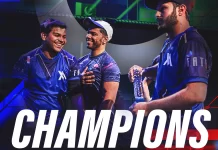Increasing the number of referrals would not decrease the authority of the umpire, but taking out the ridiculous “Umpire’s call’’ perhaps would. On the other hand, it would make the game infinitely more fair and that should be the desire of lawmakers in any sport. Quite simply, a ball hitting the stumps is out and should be given out, irrespective of the margin with which the ball makes contact with the stump. In actual fact, even the slightest clip is enough to dislodge the bails and one sees no reason why that should not be enough on replay. Leaving a match on the whim of an umpire, or his inconsistency, is absurd. Doing away with this absurdity will lessen the possibility of an umpiring decision affecting the course of the game, and that is precisely as it should be.
The nay sayers object on two grounds. The first is that this does not take into account the error margin, said to be around 4%, in the technology involved. But it is complete nonsense to suggest that the ‘Umpire’s call’ addresses this margin of error; in fact, it does the opposite. If batsman A is given not out while 40% of the ball is clipping the stump, the decision stays not out even though the 4% error margin within the technology would not have affected the fact that the ball was still hitting the stumps even allowing for the margin of error and the batsman should be out. On the other hand batsman B is given out while 3% of the ball is hitting the stumps thus with the 4% margin of error it is quite possible that the ball may have missed the stumps. So to suggest that ‘umpire’s call’ in any way addresses this situation is simply not true.
The other counterargument offered is that this would mean most Tests would finish in 3 to 4 days. I would say Amen to that. One of the main problems with Test cricket, which in many countries has made it a dying sport, is its 5-day format which many argue, with considerable justification, is simply not in keeping with the pace of modern life. Reducing the period of Test matches would, I strongly feel, bring more people to the grounds resulting in more, not less revenue. Four days with 10,000 spectators on average each day will raise more than five days with 5000 averaging every day. In most countries the fifth day, even in the former covid-free world, would be played out before largely empty stadia and even in England, where Test cricket is alive and well, ground authorities have often greatly reduced admission ticket rates for the final day. Furthermore, a reduced Test format could also reduce the factor of player burn out so I don’t think too many players should be objecting to it. Test cricket has to think out of the box if in many places around the world it is to be taken off the respirator.
I know that the reference to the respirator is no longer funny and it wasn’t meant to be. The world we live in is the reality and it is not a pleasant one. Cricketers all over the world are doing lovers of the game a great service by helping to lighten up some of these hours of darkness and they deserve our gratitude. However, I fail to see why umpires and match referees should be considered as being far too precious to be put in harm’s way when professional cricketers, who after all, are the main attraction, are going out and playing, often against acknowledged distancing guidelines. I see no reason why umpires from the so-called elite panel should not be asked to officiate and the same goes for the match referee. The umpires could wear masks, which is a benefit that players cannot allow themselves, and they may also wear disposable gloves which fielders cannot, which would save us from seeing the ridiculous spectacle of the players having to look after each others’ caps and sweaters!
The current system of playing only with home umpires leaves a heavy burden on the home umpires who do their work under the obvious pressure that their mistakes are more likely to be seen as ‘favouritism’ rather than the same decision being given by the umpire of a neutral country. The England opener Dom Sibley may well have been the beneficiary of this factor when three umpire’s calls went in his favour during a single innings in Sri Lanka. In fact this aspect is tacit in the decision to allow these Test matches to be given three referrals instead of the normal two. And if for some reason elite umpires are considered to be too precious to be asked to do their job, then at least have the third umpire and the match referee from neutral countries. If players, coaches, medical staff, managers and physios can be required to do their job under these admittedly difficult circumstances, why not regular umpires and match referees?
That said, there is only one reason why this system can be acceptable for me and this is if it acts as a testing ground and leads to home umpires officiating regularly with technical supervision by a third neutral umpire and a match referee. It is a regime I have often advocated as it would encourage home grown umpires and save the ICC money by substituting it with a system which I have no reason to believe would be any less efficient.








